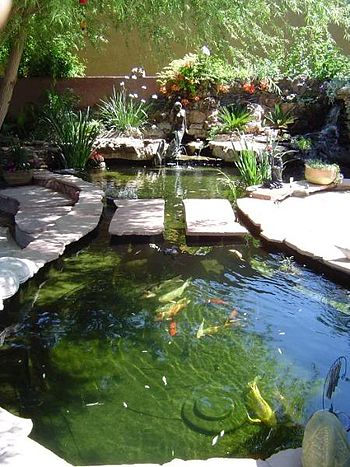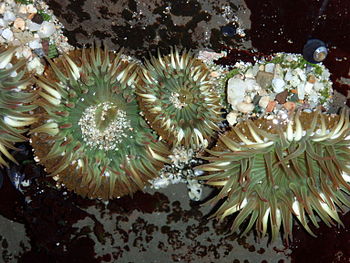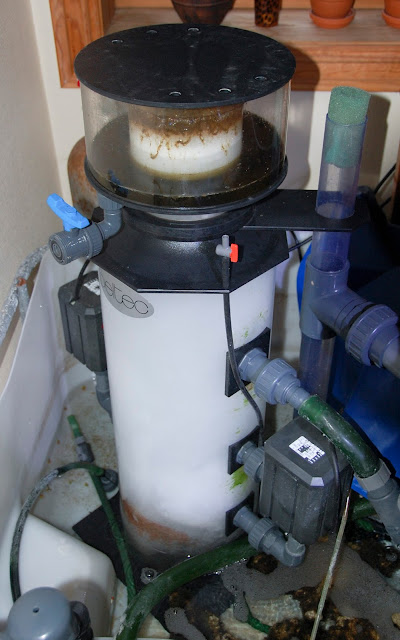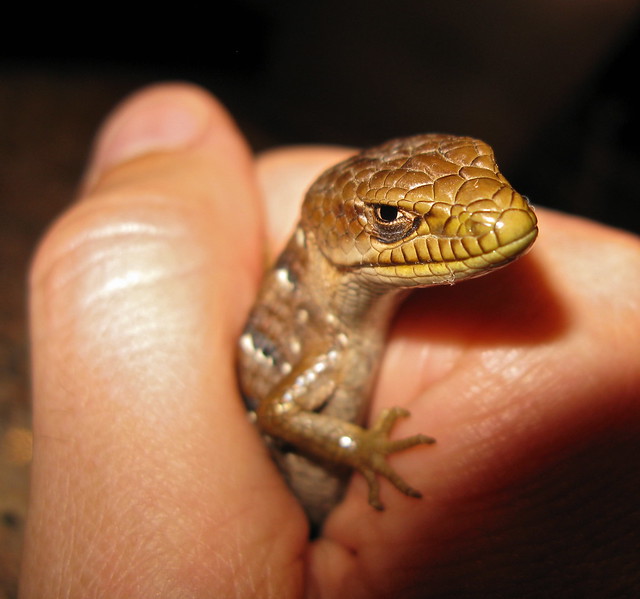Koi overpopulation is one of the hardest problems to deal with when it comes Koi ponds. Once you have too many fish in your pond, severe problems can occur, and potentially cause death among your fish.
There are a few ways to help prevent overpopulation. While you are never guaranteed that it will never happen to you, following a few simple steps will greatly reduce your chances.
 |
| Koi pond with an extensive filtration, build by Kent Wallace (Photo credit: Wikipedia) |
Do Not Overstock
A common problem new Koi pond owners run into is over stocking. When you first go to buy your Koi, it may come down to deciding between a number of Koi that is equally beautiful and playful in the spirit of saving your pond from over stocking.
Talk with your Koi dealer or Pet Store professional about the specifics of your pond. You should tell them information about what type of filtration systems you have, what total size your pond is, and where you are planning on placing your pond. With this information, a professional will be able to adequately predict the right amount of Koi you can have in your pond successfully. Do not worry if this number seems small because the professional will also be taking into account the fact that Koi grow fast and get rather large.
Some people run into the problem of not being able to turn down Koi from others. When accepting fish from sources such as other Koi pond owners, take into account why they are giving you the fish. Chances are they are giving away fish because they are having issues with over population as well. Turning down fish does not mean that you are causing any damage to those fish, it simply means that their owner will have to find a different person to take the fish.
Once Overpopulation Has Occurred
In the event that overpopulation has already occurred in your pond, there are several ways of removing babies from your pond.
One way is to stop feeding your Koi the minute you realize that spawning has occurred. You should stop feeding your Koi for no less than three weeks. Do not worry about your Koi starving, as they will focus more on natural foods if you are not feeding them daily. This “natural” diet includes their young. Koi are not cannibalistic animals by any means, but they will eat their young when they are still eggs or if they are small and resemble insects. Once the baby Koi actually resemble real fish, and the adult fish recognize this, they will no longer see them as food, so it is important to start this process as soon as you notice spawning or babies.
While this is a process of nature, you may still find this method to be cruel or unusual. Another way of removing unwanted babies from your pond is to give them away.
First, check with your local pet store. Many pet stores have programs in which they will accept unwanted animals and give them good homes. Some may even pay a certain amount for each fish since they sell them but do not count of this. Local Zoos may also have programs.
If you know of a local Koi society, you may let them know that you have unwanted babies. Alternatively, you can find a message board or group online and post messages there. Who knows, you may even start another person on a Koi keeping hobby.






